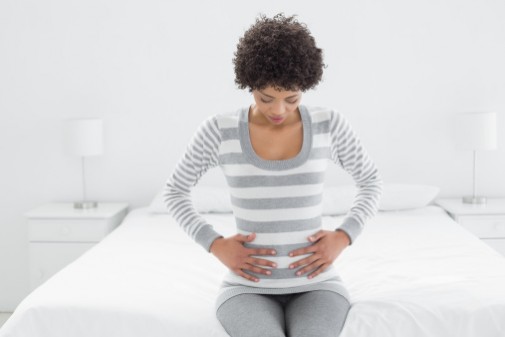Endometriosis Awareness Month: What you need to know

Unusually severe menstrual cramping, serious cyclic pelvic pain and painful intercourse—these are just some of the symptoms of endometriosis, a chronic disease that affects one in 10 women of reproductive age, according to the American College of Obstetricians and Gynecologists.
The debilitating disorder is characterized by the abnormal growth of cells from the uterine lining, known as endometrial cells, on the ovaries, fallopian tubes and ligaments that support the uterus. Endometriosis may destroy normal ligaments, inflame nerve endings and muscles and even cause scarring that attaches organs to one another and prevents them from functioning normally.
“Essentially, endometriosis acts like cancer, but it is not cancer,” says Dr. Denise Elser, a urogynecologist at Advocate Christ Medical Center in Oak Lawn, Ill. “Although the cells from one organ grow abnormally in another part of the body and cause destruction, it does not kill women.”
Other symptoms of endometriosis, which can be subtle or extreme, include severe pain that originates with menstruation but becomes constant; painful urination not related to a urinary tract infection (UTI); uncomfortable bowel movements and even infertility.
“A physician will suspect endometriosis when a woman has pain, often in the wall between the vagina and rectum, that doesn’t respond to basic treatments, such as ibuprofen, heating pads or exercise,” says Dr. Elser. “There are also clues on exams that may tip a gynecologist off, such as the indication that the uterus is scarred in place when instead there should be some elasticity in these ligaments.”
According to Dr. Elser, most women with endometriosis tend to experience symptoms in their twenties, but cases can appear during the teenage years or into the thirties. Unfortunately, treatment for the disease can be difficult.
“The good news is that new hormones are available and effective—and if surgery is required, the ability to perform this in a minimally invasive way means that time off work and recovery are simpler than they were a few short years ago,” says Dr. Elser.
A minimally invasive surgical option, known as laparoscopy, involves placing a patient under general anesthesia and creating two to three small abdominal incisions in which physicians place a telescope and other surgical instruments that allow a clear visualization of the pelvic region and the opportunity to biopsy tissue. If necessary, cysts and endometrial deposits will be removed, and the physician will separate any scar tissue that is holding organs together in an abnormal way.
A second treatment option is hormone therapy, which may come in the form of oral birth control; an injection of leuprorelin, which causes a temporary menopause; or an aromatase inhibitor, which works to lower estrogen levels. All options are designed to limit the spread of endometriosis by controlling hormone levels.
“Some of these hormones, which cause a temporary menopause, are used for a limited time to prevent long-term side effects. These drugs are not always easy to tolerate due to symptoms such as mood swings, exacerbation of depression (if preexisting), unwanted hair growth and weight gain,” Dr. Elser says.
There is no cure for endometriosis, but treatment can help reduce pain and infertility risk as well as improve overall quality of life. While the disease can improve after pregnancy, this is certainly not always the case. Ultimately, natural or surgical menopause, which involves removing the ovaries, are the best options for cessation of suffering.
Dr. Elser encourages family and friends of women with endometriosis to be supportive and understanding, as symptoms are disabling.
“Women are not faking when they have to miss work or can’t cook for days out of each month. If sex is painful, a spouse or partner needs to understand why a woman may not look forward to it. And if infertility ensues, the stresses on a couple or family are multiplied,” she says.
Dr. Elser recommends that women with endometriosis be seen by a gynecologist on a regular basis, since intervention can reduce chronic pain and infertility.
Related Posts
Comments
About the Author
health enews contributor, is on the Advocate Health Care communications team. When she is not writing health enews articles, she is busy chasing her two kids, two cats and two dogs. She also enjoys reading, cooking, baking and drinking coffee.

















